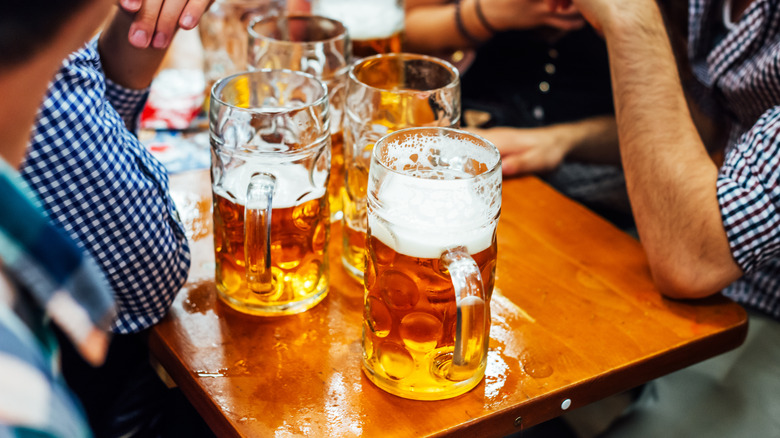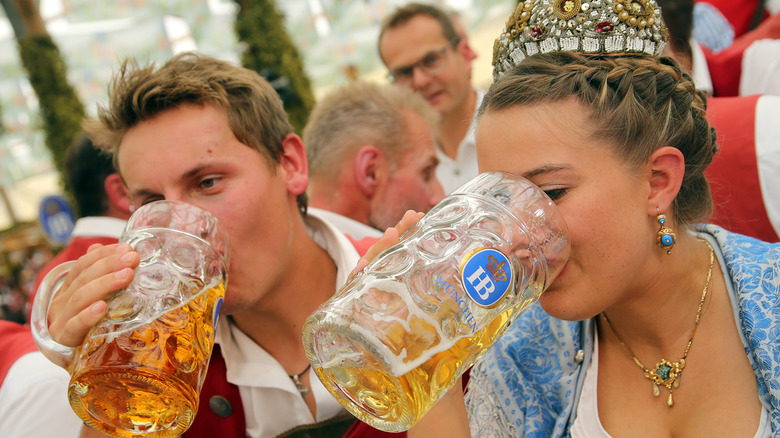Here's What Makes Oktoberfest Beers Unique
Oktoberfest dates back to 1810, when royal families decided to throw a big party to celebrate the marriage of Crown Prince Ludwig and Princess Therese of Saxony-Hildburghausen (via the Malteurop Malting Company). Locals were invited, and the Bavarian bash was such a showstopper that the party became an annual autumn tradition. And, though the essence of gathering around to drink handles of beer, listen to music, and celebrate with friends hasn't changed much over the years, the type of beer actually poured into glasses has.
But wait — isn't any beer guzzled during the month of October considered an Oktoberfest beer? Not technically. Only a small group of German breweries get to place an Oktoberfest label on their brews, according to Craft Beering. Even the Brewers Association has set guidelines for which beer can fall into the category. So, what makes the beers served at Munich's Oktoberfest so special?
A brew worthy of a festival
When Oktoberfest first began, folks drank a dark lager, mostly because that is what could be produced at the time. For the first 60 years or so this darker dunkel style beer was poured — until Märzen took its place, notes Hop Culture.
Märzenbier, literally "March beer," was originally brewed during the month of March and stored in cool caves to last throughout the summer (via Craft Beer and Brewing). This amber lager became Oktoberfest's official beer in 1872 and remained the reigning festival preference until Paulaner introduced festbier.
According to Bean to Barstool, festbier goes down a bit more easily than Märzen. Light and smooth, festbier is the only kind of beer served at the Munich festival. Kegerator describes the flavor profile as having a "sweet, doughy taste" and a balanced, crisp bitterness that is offset by a medium, creamy body. In short, festbier is perfect for pairing with traditional Oktoberfest German recipes like pretzels and schnitzels.

